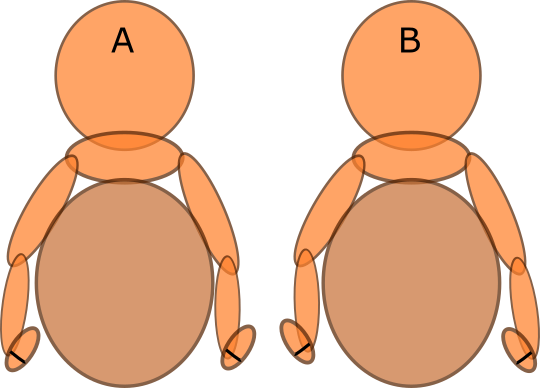The side movements, shoulder in and quarter in. Used a lot in the academic art of riding, but how do we really ride them, or maybe rephrased, how do we ride them from our seat?
The side movements, shoulder in and quarter in (and the counter shoulder and quarter in) are movements we use a lot in the academic art of riding. They are also quite misunderstood, in the sense that people focus on the “side” of the side movements. They should not be more sidewards than forwards. When you focus too much on the sidewards the horse often straighten up and fall on a shoulder or step too much out or in with a hindleg. The side movements are to be used to send all four legs of the horse in the direction of the movement, the hindlegs stepping in under the seat of the rider and the front legs stepping in under the muzzle of the horse. This can most easily be seen when looking at the hooves of the horse. Are they all moving in the same direction or is the direction of some hoof twisted in or out?

As we discussed in the last blog post, the upper legs of the rider should lie flat against the saddle. The front muscles of the thighs move the shoulders of the horse and the back of the thighs move the hindlegs of the horse. To do a shoulder in you use the front of the outer upper leg (heel out) to move the shoulder in and the back of the inner upper leg (heel in) to move the hindlegs out. For the quarter in, you use the back of the outer upper leg (heel in) to move the quarters in and the front of the inner upper leg (heel out) to move the shoulders out. Sounds like a lot of details? Bent had the perfect picture to remember this. Think that you are having skis on your feet. They should always stay parallel to each other. The inside upper leg is always working in a downwards sense and the outside one in an upwards sense.
…when you have learned all the “technical” details you also need to develop your feeling of the horse and the movements.
In addition to having your upper legs in order you also need to think about your direction of movement and balance. The forward shoulder in has the direction to the outer shoulder whereas the collected shoulder in has the direction towards the tail. The forward quarter in has the direction of the inner shoulder whereas the collected quarter in has a direction towards the inner hindleg. Last but not least, when you have learned all the “technical” details you also need to develop your feeling of the horse and the movements. In the end you need both to obtain harmony.